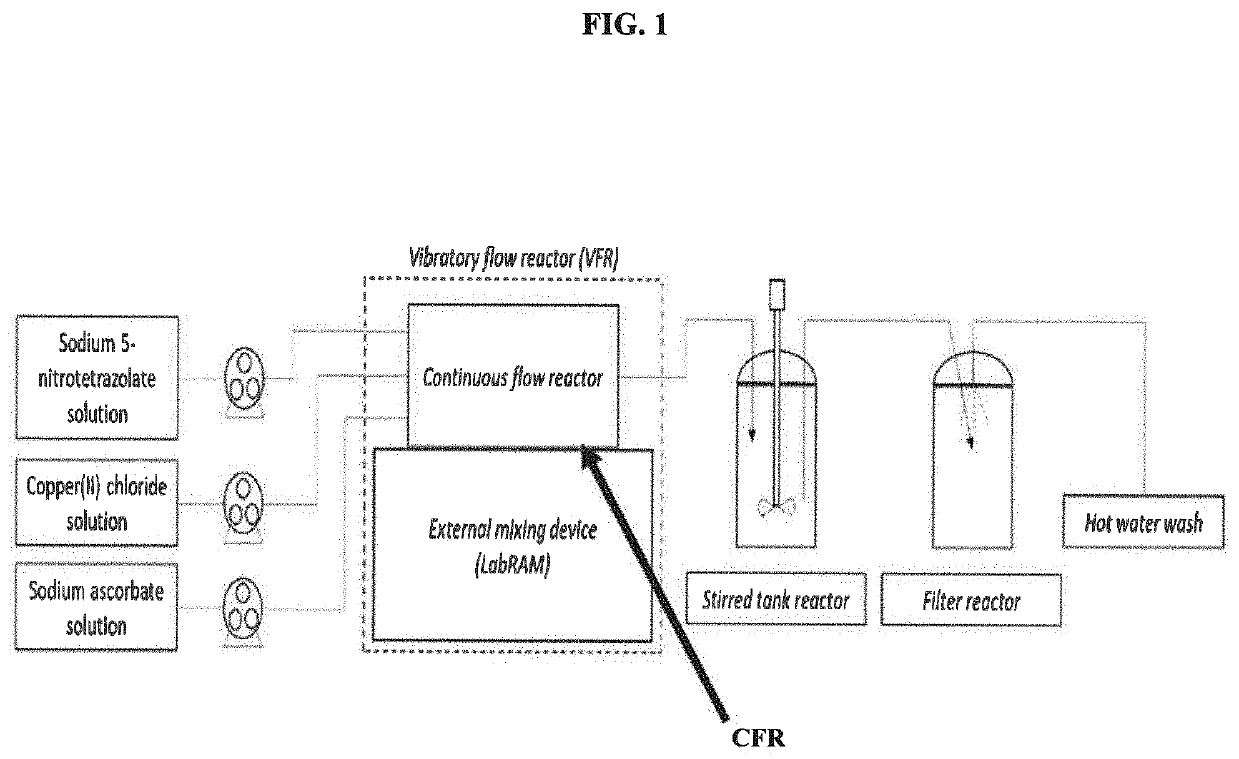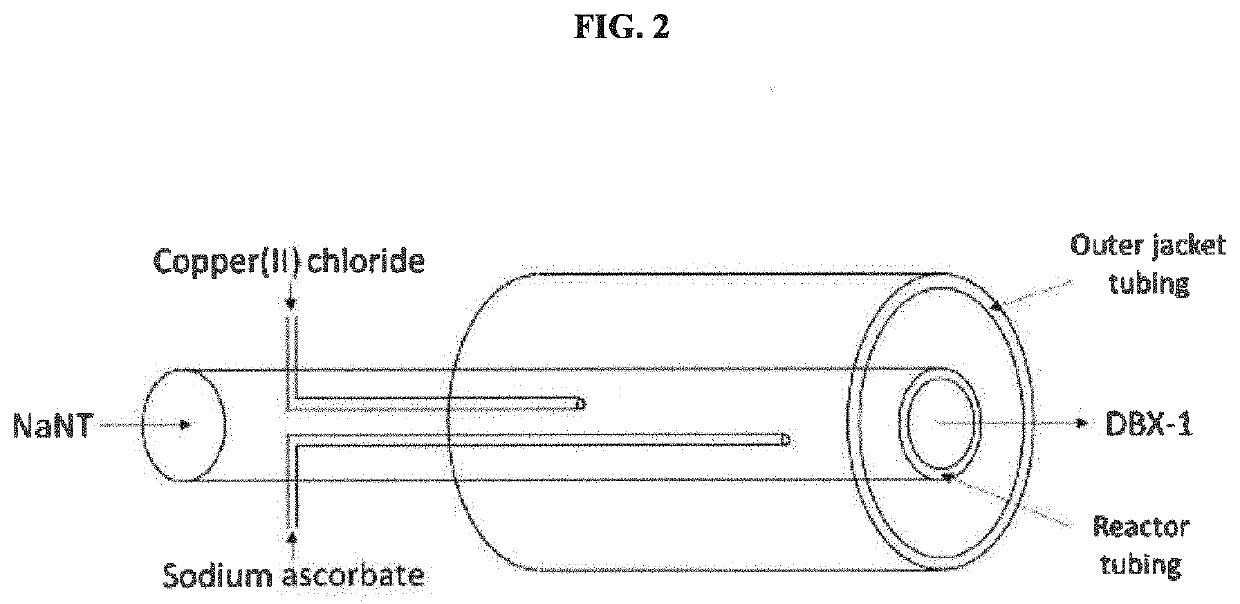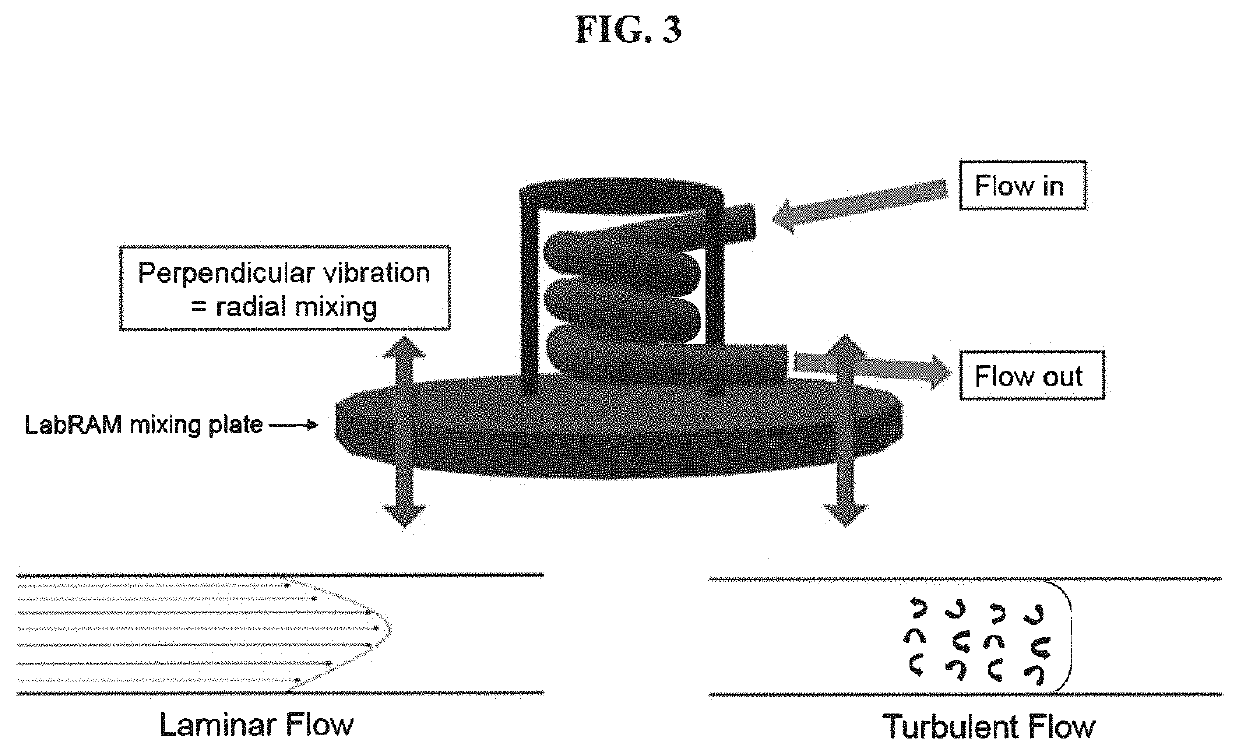Continuous manufacture of DBX-1
a technology of dbx-1 and manufacturing method, which is applied in the direction of nitrated metallo-organic explosive compositions, explosives, organic chemistry, etc., can solve the problems of copper azide, substantial toxicity hazards for personnel tasked with working in these surroundings, and severe scrutiny
- Summary
- Abstract
- Description
- Claims
- Application Information
AI Technical Summary
Benefits of technology
Problems solved by technology
Method used
Image
Examples
example 1
[0029]A continuous flow system was engineered by mounting a tubular reactor (or PFR) on top of an acoustic mixer. The reactor coil was engineered using ¼″ outer diameter (OD) Teflon PTFE tubing. A temperature jacket was engineered using ½″ OD and ⅜″ inner diameter (ID) Teflon PTFE tubing. The dosing lines were selected to be 1 / 16″ OD in order to fit within the reactor tubing. The tubing were engineered into a coil shape and mounted to a resonant acoustic mixer (LabRAM II™ available from Resodyn). A stirred tank reactor (STR) was set up using a Mettler Toledo Optimax™ reactor equipped with a 1 L glass reactor fitted with a half-moon impeller, internal temperature probe, and a Mettler Toledo particle vision and measurement (PVM) probe. The jacket temperature of the tubular reactor and the internal reactor temperature of the STR were set to 85° C.
[0030]To meet the minimum stir volume and ensure the tip of the PVM probe was submerged, a heel of DBX-1 was generated in the STR (100 ml). A...
example 2
[0033]An aqueous solution of sodium 5-nitrotetrazolate was fed into a temperature controlled tubular reactor at 12.44 g / min where it was mixed with feeds of aqueous copper(II) chloride and aqueous ascorbate at flow rates of 2.16 g / min and 0.39 g / min respectively. The mixture was allowed to react within the tubular reactor before entering a continuous stirred tank reactor (CSTR). The tubular reactor was mounted to an independent mixing device set to an acceleration of 12G, which provided constant turbulent mixing within the tubular reactor at all times. The temperature during the addition of reactants to the tubular reactor and during the CSTR phase was 95° C. The CSTR was allowed to fill to a total fill volume of 500 ml before an aliquot of 70 ml was transferred to the filter. The process of filling the CSTR to 500 ml and collecting 70 ml aliquots was repeated several times over, resulting in an average yield of 0.6 g (37%) DBX-1 isolated on the paper per aliquot.
PUM
| Property | Measurement | Unit |
|---|---|---|
| temperature | aaaaa | aaaaa |
| temperature | aaaaa | aaaaa |
| temperature | aaaaa | aaaaa |
Abstract
Description
Claims
Application Information
 Login to View More
Login to View More - R&D
- Intellectual Property
- Life Sciences
- Materials
- Tech Scout
- Unparalleled Data Quality
- Higher Quality Content
- 60% Fewer Hallucinations
Browse by: Latest US Patents, China's latest patents, Technical Efficacy Thesaurus, Application Domain, Technology Topic, Popular Technical Reports.
© 2025 PatSnap. All rights reserved.Legal|Privacy policy|Modern Slavery Act Transparency Statement|Sitemap|About US| Contact US: help@patsnap.com



